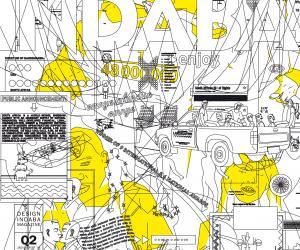First Published in

Jason Bruges's new Memory Project is an interactive installation piece conceived to prompt thought and discussion around how we capture and store digital memories.
"With text messages replacing letters and camera phones replacing photo albums, people's memories are increasingly going digital. We understand that customers are concerned with losing their memories but that backing up can be complex," explained Sally Cowdry, marketing director of O2, the UK mobile service provider that commissioned the work to promote their simple new way of backing up cellphone content.
Physically reminiscent of a Victorian cyclorama, the Memory Project is a cylindrical structure with 11 cameras placed equidistance around its perimeter. Each of these cameras takes a picture in sequence every five seconds, creating a 360 degree, digital panorama of the outside location every minute. These images are then transmitted to giant screens on the structure's interior. Visitors can venture inside to view and interact with the images via thermal image cameras. These cameras allow visitors to "direct" which images are displayed - moving to shift the displayed images back and forwards in time , and interacting with the location's memories through gestures.
Jason Bruges's new Memory Project is an interactive installation piece conceived to prompt thought and discussion around how we capture and store digital memories.
"With text messages replacing letters and camera phones replacing photo albums, people's memories are increasingly going digital. We understand that customers are concerned with losing their memories but that backing up can be complex," explained Sally Cowdry, marketing director of O2, the UK mobile service provider that commissioned the work to promote their simple new way of backing up cellphone content.
Physically reminiscent of a Victorian cyclorama, the Memory Project is a cylindrical structure with 11 cameras placed equidistance around its perimeter. Each of these cameras takes a picture in sequence every five seconds, creating a 360 degree, digital panorama of the outside location every minute. These images are then transmitted to giant screens on the structure's interior. Visitors can venture inside to view and interact with the images via thermal image cameras. These cameras allow visitors to "direct" which images are displayed - moving to shift the displayed images back and forwards in time , and interacting with the location's memories through gestures.







